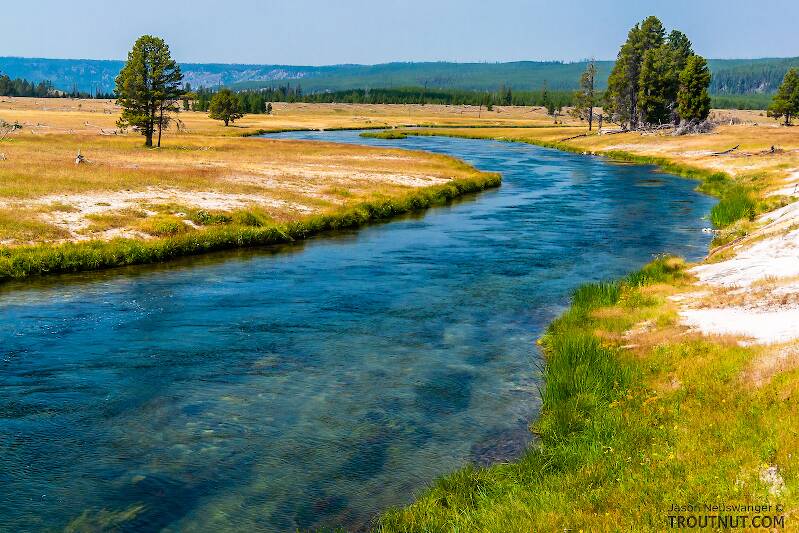
Hex Mayflies
Hexagenia limbata
The famous nocturnal Hex hatch of the Midwest (and a few other lucky locations) stirs to the surface mythically large brown trout that only touch streamers for the rest of the year.


Male Callibaetis ferrugineus (Speckled Dun) Mayfly Spinner Pictures
This is one of four specimens I photographed together from the same hatch, also including a nymph, a male dun, and a female dun. According to the key in Check (1982), the clear wing venation on the associated dun shows that it is either Callibaetis ferrugineous or Callibaetis pallidus, and the characteristics to tell the difference between those two are maddening for both the nymph and adult. If the partial shading in the wing is "medium to dark brown," and the dots on the body are "fuscous to dark brown," then it's ferrugineous. If the wing shading is "chestnut brown" and dots on the body are "yellowish to chestnut brown," then it's pallidus. However, several spare specimens I collected alongside the one in the photo have no markings on the wing at all, which would seemingly indicate ferrugineous according to the key. It's enough for a contingent ID, but I still wouldn't rule out pallidus.
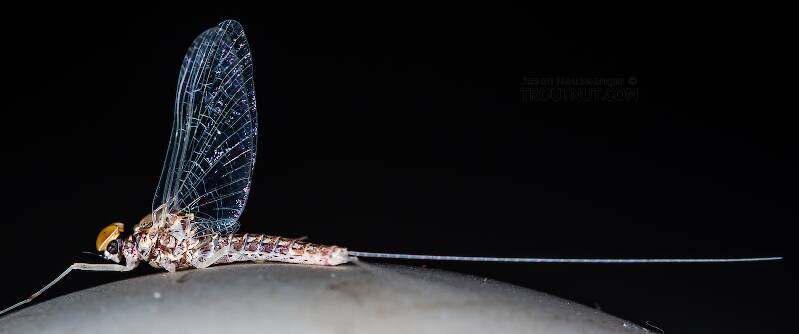
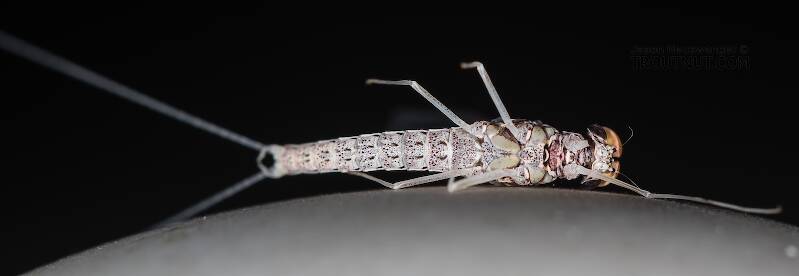
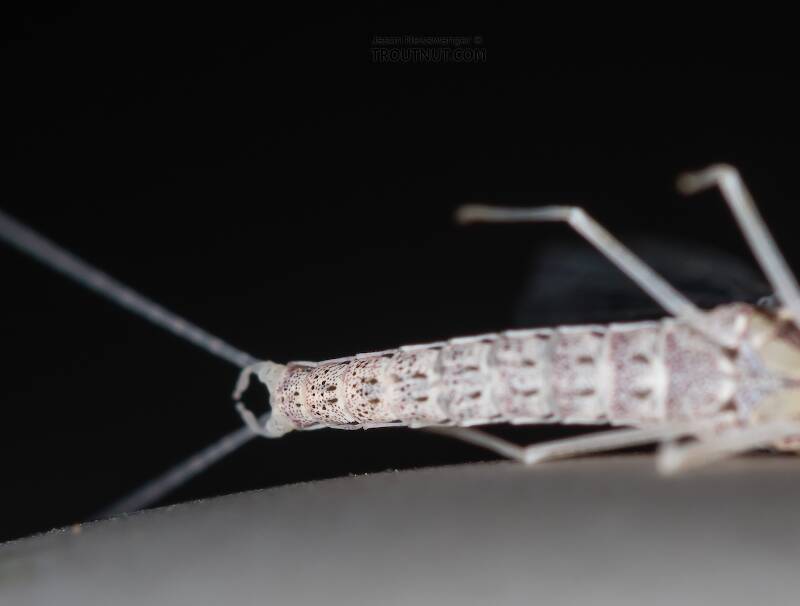
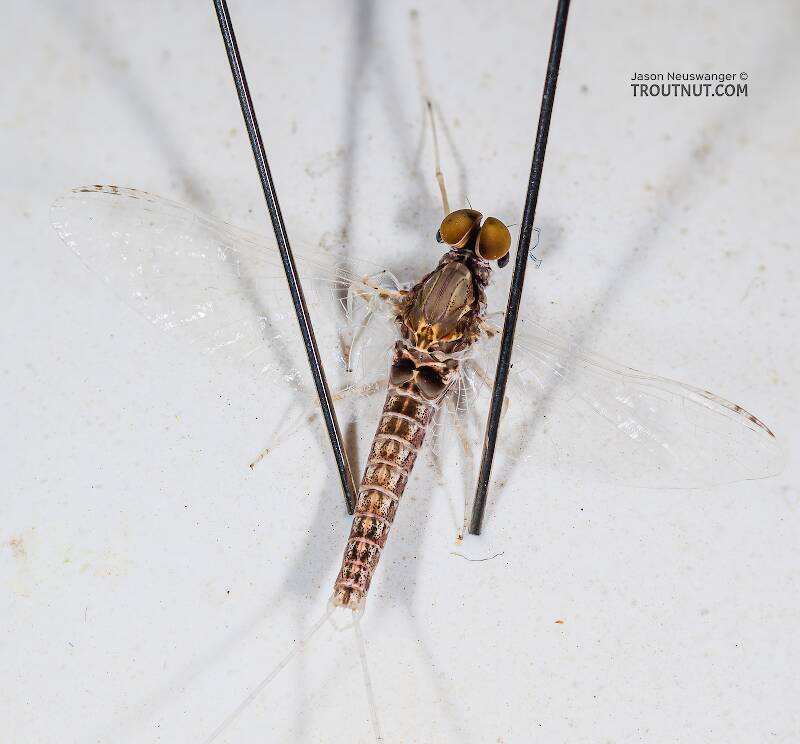
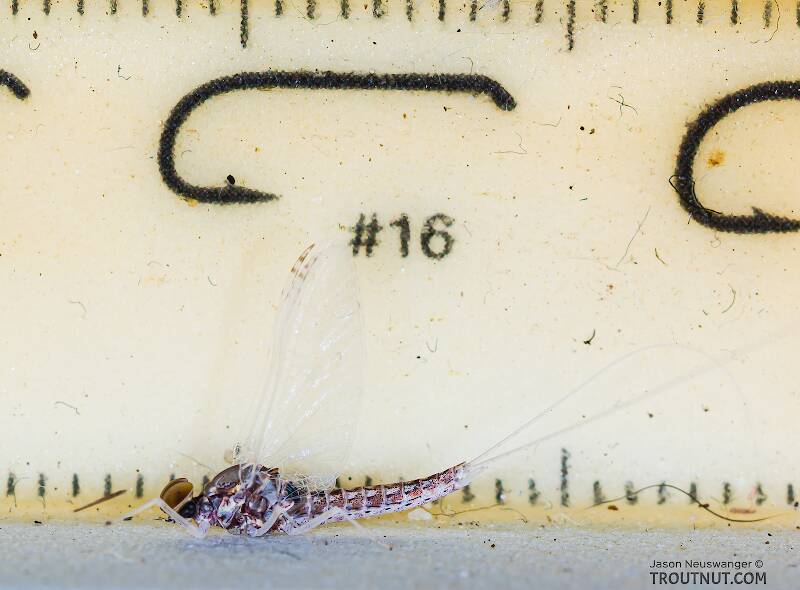
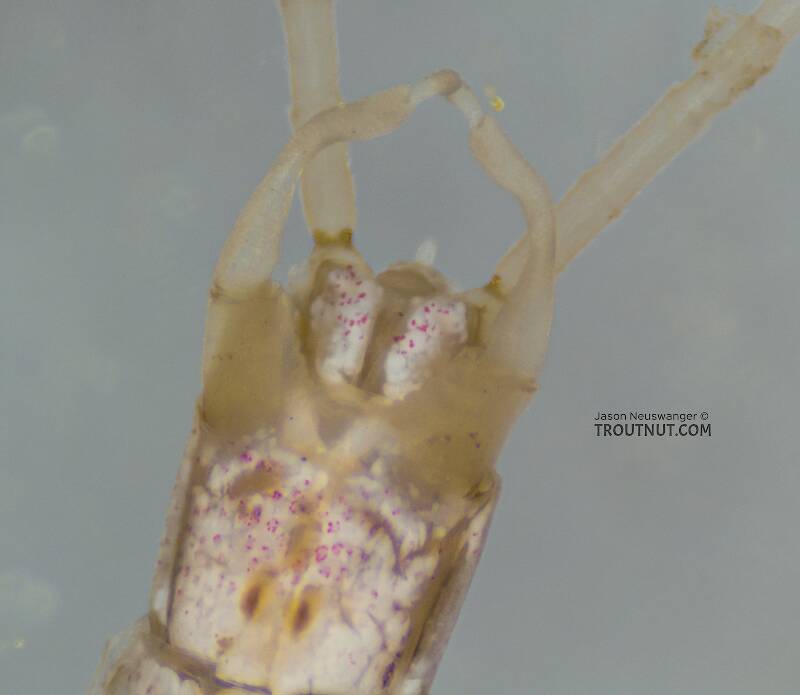
This mayfly was collected from Mystery Creek #304 in Idaho on July 23rd, 2022 and added to Troutnut.com by Troutnut on January 15th, 2023.
Start a Discussion of Spinner
Male Callibaetis ferrugineus (Speckled Dun) Mayfly Spinner Pictures
Collection details
Date: July 23rd, 2022
Added to site: January 15th, 2023
Author: Troutnut

